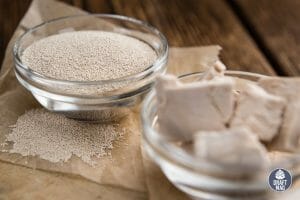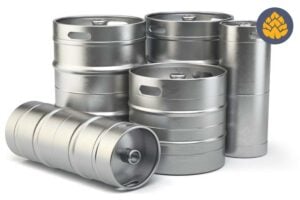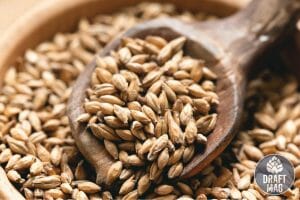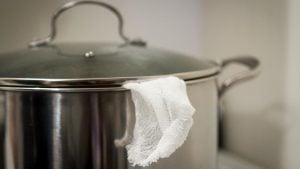Batch Sparge: All You Need To Know About This Brewing Technique
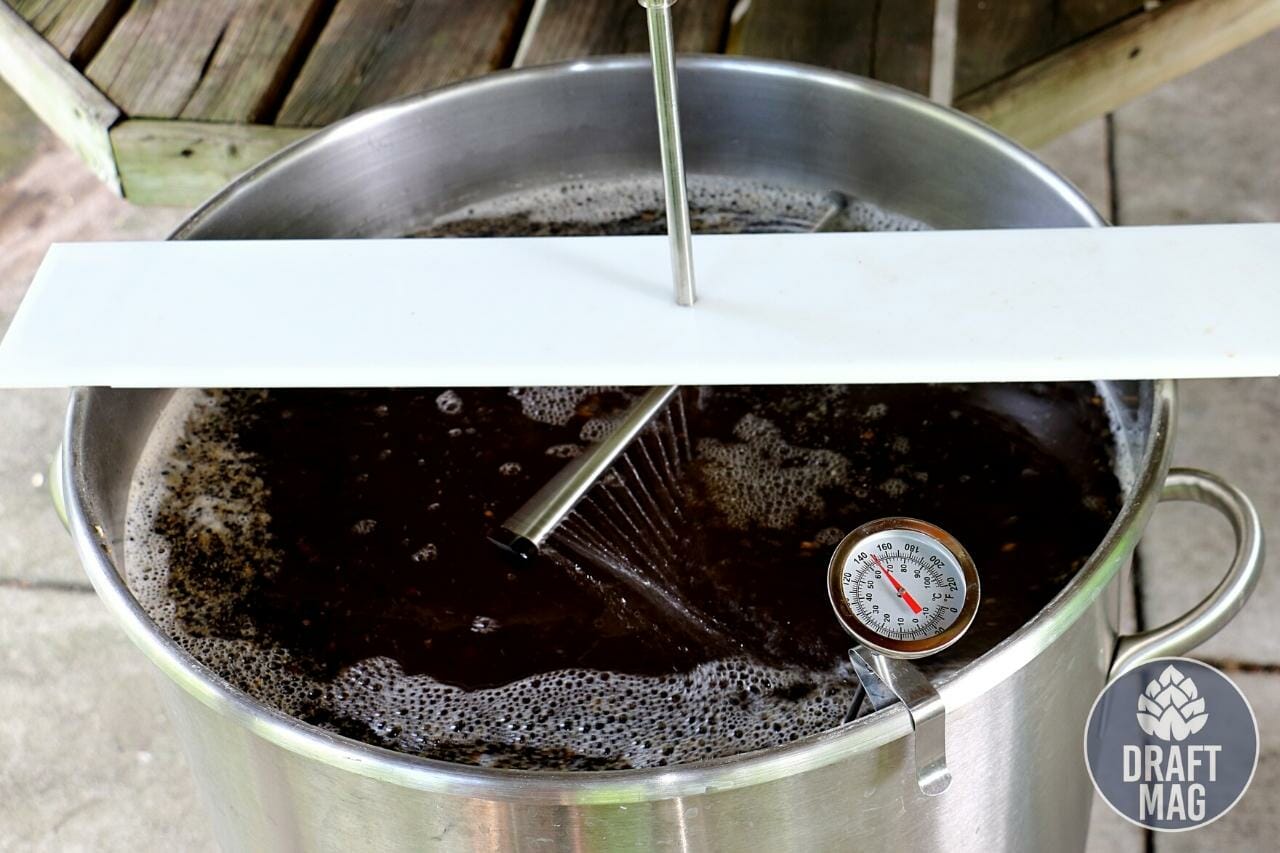 Batch sparge may look sophisticated for beginners, but seasoned homebrewers know the fun hidden behind this scientific process.
Batch sparge may look sophisticated for beginners, but seasoned homebrewers know the fun hidden behind this scientific process.
Nobody could tell the importance of batch sparging more than a person who spends his weekend crafting unique blends at home.
Therefore, it is important to have a sound knowledge of various equipment used, calculations, and step-by-step procedure to achieve the desired results. Continue reading as we have tried to make the whole concept of batch sparging as simple as possible in the succeeding paragraphs.
What Is Batch Sparging?
Batch sparging is the process of using water to extract sugars from the mash when brewing beer. In batch sparging, the full volume of hot water (also called sparge water) is directly mixed into the mash. The grain bed is then left to settle before the wort is drained off in another container.
Since time immemorial, the process of batch sparging has been prevalent in the industry, and in the 19th century, the method was popularly known as party-gyle brewing.
Furthermore, you can add more batches of sparge water as per the requirement. Relatively, it is a more straightforward method than other types of sparging. However, the process may reduce the efficiency of the wort.
Once mastered, batch sparging techniques reap benefits in the long run. Hobby or not, you will unlock the potential to experiment at the comfort of your house with a little investment. However, like other chemical reactions, it is essential to achieve and provide the perfect environment in this method too.
How To Batch Sparge
Here is a complete guide to batch sparging at home. Before we jump into the step-by-step process, let’s first go through some preparations.
– Equipment
This process doesn’t demand complex or multiple types of equipment. Nevertheless, you have to arrange the following equipment for the best results.
Things you need:
- A brewing setup
- A mash tun with a false bottom and ball valve
- A large heating pot or kettle
- A heat-proof pitcher
- A thermometer
– Necessary Calculations
It is rightly said that brewing is the perfect combination of soul and science. Therefore, no one can skip the calculations part in the brewing process, especially during sparging. Sparge water calculation becomes more critical because it determines the wort pre-boil volume, which in turn helps to achieve the target original specific gravity.
Several factors ranging from a batch sparge temperature to the volume of sparge water determine the efficiency of the outcome. While the availability of online calculators has made the task simple, it takes more than any online tool to train the brain. For this, manual calculation still remains the best viable option.
Therefore, before understanding the batch sparging techniques, let us look at some important calculations with examples:
-
Strike Water Calculation
During the mashing process, water is added to the crushed grains to form a syrup/mash. This water is referred to as strike water. Depending on the thickness of the mash, the formula to calculate strike water volume is:
Strike water volume = weight of grain * desired mash thickness
For instance, the strike water volume for a mash with a thickness of 1.25 qts./lb. (2.6 L/kg) and 10 lbs. (4.5 kg) of grain is:
Strike water volume= 10 lbs. (4.5 kg) * 1.25 qts./lb. (2.6 L/kg). = 12.5 quarts (11.8 liters)
-
The Volume of Water Absorbed by the Grains
The amount of water absorbed by the grain depends on various factors such as the type of malt, specifics of the grain bill, and moisture content. Generally, brewers take 0.50 qts/lbs (1.04L/Kg) as an average assumption in most cases.
Hence, in our example, the amount of water absorbed by the 10 lbs. (4.5 Kg) of grain is 5.0 quarts (4.7 L).
-
Total Volume of the Mash
To choose the correct vessel for mashing and sparging, it is vital to calculate the total volume of the mash.
You can do so using the following formula:
Total mash volume = water volume + grain volume
To calculate the volume of grain, the amount of water displaced is taken as a reference. A value of 0.32 quarts per pound (0.67 L/kg) is considered an average. As a result our total mash volume is 12.5 + 3.2 (0.67*4.5) = 15.7 quarts (14.8 L).
-
Sparge Water Calculation
As the name suggests, you have to sparge the mash in one or more batches followed by stirring the mash. After the grain settles at the bottom, let the first runoff drain and recirculate until it becomes clear.
To calculate the exact volume of sparge water, it is imperative to calculate the volume of first runnings using the formula:
The volume of first runnings = Strike water volume + volume of any other water added to the mash – the volume of water absorbed by the grain – volume of liquid remaining in the bottom of the mash tun – the volume of liquid remaining in lines or pumps.
Let us put the figures from the above example in this formula considering the following as an average:
- the volume of liquid remaining in the bottom of the mash tun: 1.0 quarts (0.9 L)
- the volume of liquid remaining in lines or pump: 0.25 quarts (0.2 L)
Therefore, the volume of the first runoff is 12.5 + 0 – 5.0 – 1.0 – 0.2 = 6.3 quarts (11.8 + 0 – 4.7 – 0.9 – 0.2 = 6.0 L).
Finally, subtract the volume of the first running from your target pre-boil volume to get the sparge water volume.
The total volume of sparge water = Target pre-boil volume – the volume of first runnings
Let us take our pre-boil volume as 28.0 quarts (26.5 L), and the volume of the first running as calculated above is 6.3 quarts (6.0 L).
Therefore, Total volume of sparge water = 28.0 – 6.3 = 21.7 quarts or (26.5 – 6.0 = 20.5 L).
However, you can also consider an average of two quarts of sparge water per pound of grain (4.2 L/kg). Batch sparging techniques primarily focus on the right volume of water and temperature.
-
Batch Sparge Temperature
As the volume of the sparge water matters, so does the optimum temperature. In any case, do not let the sparge water temperature go beyond 168-170 F (76–77 C), as husk tanning becomes more soluble beyond this range.
Failure to maintain the temperature may lead to astringency in the beer. However, a slight variation in the early stages of sparging may not cause harm.
-
Batch Sparge Time
It takes approximately 5-6 minutes per batch for a standard 5-gallon mix. In contrast, fly sparging can take up to 90-120 minutes.
– How to Batch Sparge: A Step-by-Step Guide
Here is a step-by-step guide to batch sparging.
-
Heat up Strike Water
Heat up 4.5 gallons of water in your boil kettle to 170 F. While this striking water is heating up, boil a few cups of water and add to your mash tun. This will heat the tun and reduce the heat lost when transferring your strike water to the vessel.
-
Mash In
Pour the strike water to the mash tun to ensure minimum heat loss during the transfer. Add in the grains and stir slowly to ensure none of the grains are clumped or left dry. After the temperature of the mash tun stabilizes at 154 F, cover and let sit for 60 minutes.
-
Prepare Sparge Water
In between, prepare the sparge water by heating 4.2 gallons of water to 170°F.
-
Optional Step
To test the conversion of starches to sugar, you can use an iodine test trip or drops. Add a drop of iodine to the collected sample of mash. If it turns dark purple or black, consider leaving the mash for more minutes as it still has starch.
-
Vorlauf
Vorlauf is the German word for recirculation. This step is used to settle the grain bed and finally clear the wort of sediment. To do this, drain out a few quarts of pitcher-full of running from the mash tun. Slowly return them to the mash until the wort runs almost clear.
-
Sparge
After you get the first clear runoff, close the mash tun valve. Add in the prepared sparge water. Stir the grains, break up any clumps, leave them for 10 minutes, recirculate like before, and lauter them into your boil kettle.
-
Measure
Collect your pre-boil and measure the volume. You will also need to determine the pre-boil specific gravity using a hydrometer.
-
Boil
Transfer the pre-boil to the heating kettle, add some hops, and let the blend rest to achieve greatness.
What Is Sparging?
Sparging is a method to extract convertible sugars from the mash grain bed by rinsing them with hot water. It is essentially an all-grain homebrewing process in which liquid wort is drained out by sprinkling and scattering hot water on the grain bed.
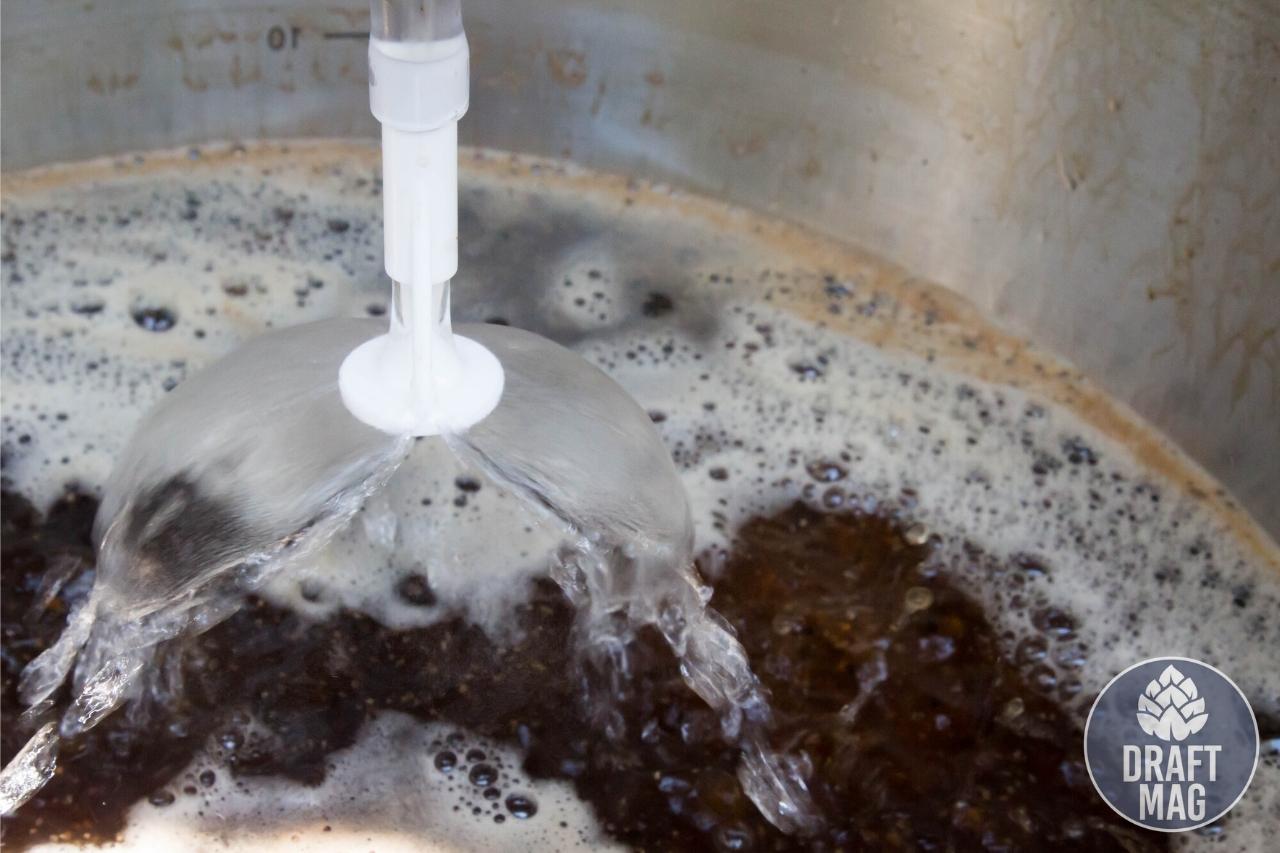 To put it simply, the rinsing is used to squeeze out as maximum usable sugar as possible. Any type of all-grain brewing process must go through sparging to get the clear liquid (wort) from the mash.
To put it simply, the rinsing is used to squeeze out as maximum usable sugar as possible. Any type of all-grain brewing process must go through sparging to get the clear liquid (wort) from the mash.
There are majorly three types of sparging methods:
- no-sparging
- fly-sparging
- batch sparging
The fly-sparge method is used for large-scale brewing, which we will discuss later.
To fully understand how to batch sparge, it is imperative to know the essential steps of the brewing process. Let us quickly look at the process before going further.
– Brewing Process
Steps followed during the brewing process are:
- Selection of malt
- Milling (crushing the malt)
- Mashing (addition of strike water to the crushed malt)
- Sparging (to extract usable sugars from the mash)
- Lautering (collect of the pre-boil wort)
- Boiling the wort
- Addition of hops
- Fermentation
- Finishing and aging
- Maturation and Ccarbonation
Why Should I Do Batch Sparging?
One of the major reasons homebrewers choose batch sparging is its simplicity. Additionally, it doesn’t require sophisticated equipment and takes much less time than other sparging methods.
The grain bed acts as a filter in batch sparging to keep unwanted particles making their way into the wort. This results in a beautiful and clear drink every time.
With little modifications such as brew in a bag, the clarity can be maximized. Although it takes a little more manual effort in this process, it remains the top choice for people having budgets and resources restriction.
Double Batch Sparging
Brewers mostly perform batch sparging in two runoffs, known as double batch sparging. In this method, you have to collect half of the target pre-boil volume at an instance. After combining the two batches, you will get the total pre-boil volume.
Batch Sparge vs Fly Sparge vs No Sparge
There are three types of sparging techniques used across the beer industry: batch sparge, fly sparge, and no sparge. Let us understand the differences between these three.
– Fly Sparge
Fly sparge, also known as continuous sparge, is generally accepted as the most efficient sparging method as it extracts the most fermentable sugars from the mash. The process includes a continuous introduction of slow-running sparge water in the mash tun by spraying.
For spraying, brewers use “sparge arm.” After that, runoff is drained in another container in a very controlled manner. In simple terms, the volume of exit (run-off) should remain in equilibrium to the volume of liquid entering (sparge water).
Advantages
- The most efficient method for extraction of sugars (both fermentable and non-fermentable).
- More efficiency with the same quantity of grains means a more cost-effective process. Hence, a suitable method for commercial use.
Disadvantages
- Complex procedure as constant monitoring is a must.
- Requires special equipment.
– No Sparge
As the name suggests, the sparging process is skipped in this method. The mash is simply drained out, and water is directly added to the wort in the boil kettle. It is the least common method of sparging.
Advantages
- The simplest sparging method: just fill, mix and drain.
- Does not require special equipment.
- Does not typically extract tannins.
- A quick method of brewing.
Disadvantages
- Decreased brewing efficiency as many potential fermentable sugars are not extracted.
- Not suitable for large-scale brewing.
How To Increase Efficiency
Mixing the mash tun, maintaining high temperatures, and using rice hulls are some effective ways to increase batch sparge efficiency.
In general, batch sparging is significantly less efficient than fly sparging. You can achieve an efficiency of 70 to 85 percent in batch sparging. On the other hand, a fly sparging setup can deliver 80 to 95 percent efficiency.
Here are a couple of tips to help increase batch sparge efficiency:
– Mix It Up
It is important to gently stir the mash tun after adding sparge water. It helps prepare a better grain bed that will help in further filtration of the wort. Similarly, let the grain bed settle for a few minutes before recirculation.
– Adjust Your Grain Crush
The most common problem brewers face is stuck sparging. The main cause behind this is improper grinding of the grains. Do not go for too fine grain crush when you grind the grain yourself or purchase it from the homebrew supply store.
Powdery grain bed may form gelatinized mass during sparging and interrupt the filtration. Furthermore, fine particles may clog your valves and pipes. Thus, it should be thick enough to prevent stuck sparge. For this, grind the grain just enough to break the kernels.
– Reduce Wort Loss
Considering the number of resources, investments and calculations behind the brewing process, every drop matters. Hence, you should try to restrict the loss of wort by leaks, spills and loss in dead spaces.
Similarly, use equipment, kettle and mash tun according to the desired volume of the mix.
– Maintain High Temperatures
If the temperature in your mash tun is lower than 145 F (62.8 C), the grains begin to gelatinize. To make the wort flow smoothly and steadily, you can do these things:
- Heat up the sparge water to around 185 F (85 C).
- Insulate the mash tun properly to avoid loss of heat.
– Use Rice Hulls to Enhance Flow
Do not throw the discarded husks from grains of rice. Instead, add no more than 5 percent of it to your total grain bill. It encourages smooth flow and extraction efficiency. When added in low quantity, rice hulls will not change the brew’s flavor profile.
– Slow Your Lauter
When you lauter, do not keep the extraction rate too high during the initial phase. A high rate can pull too much liquid, resulting in a vacuum lock in the grain bed. This will ultimately stop the flow of wort.
On the flip side, if you gradually increase the wort flow by adjusting the valve, it will increase extraction efficiency. This way, you can extract every single drop of wort from the mash tun.
Endnote
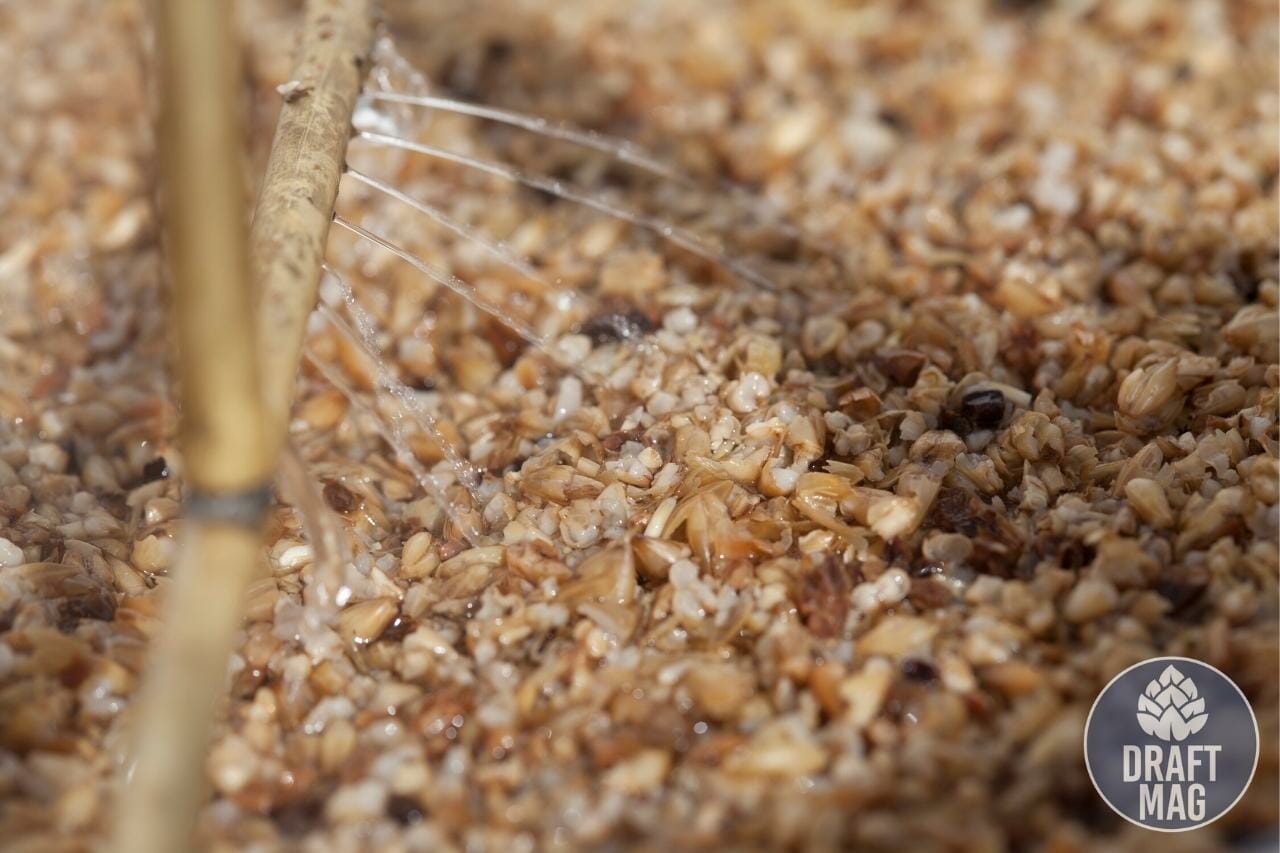 No matter what method you choose for sparging, the main goal is to extract the most usable wort for further fermentation.
No matter what method you choose for sparging, the main goal is to extract the most usable wort for further fermentation.
For homebrewers, investment and time are the primary considerations, so here comes the importance of batch sparging — a simple and cost-effective method.
- In batch sparging, hot water is directly mixed into the mash. After that, the grain bed is left to settle and the wort is drained off in another container.
- In the nineteenth century, the method was popularly known as party-gyle brewing.
- One of the major reasons homebrewers choose batch sparging is its simplicity, as it doesn’t require fancy equipment and requires much less time than other methods.
- Several factors ranging from a batch sparge temperature to the volume of sparge water determine the efficiency of the outcome.
- Mixing the mash tun, maintaining high temperatures, and using rice hulls are some effective ways to increase batch sparge efficiency.
Undoubtedly, it is the best method to achieve optimal mash and brewhouse efficiency without getting your hands on complex equipment. For beginners who consider this an activity straight from the chemistry labs, it’s a lot easier than you may think and in no time at all, you will surely master the technique.


